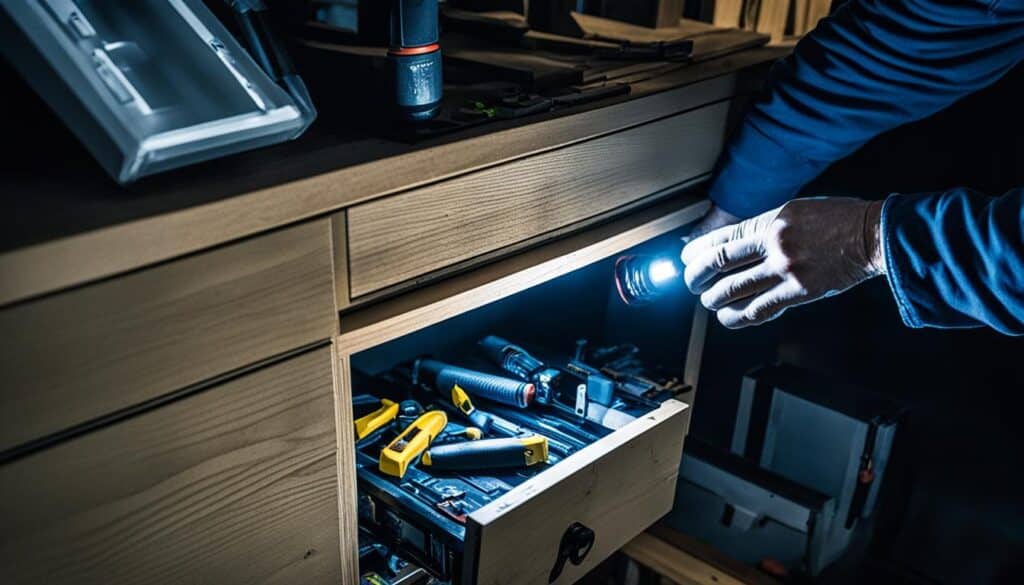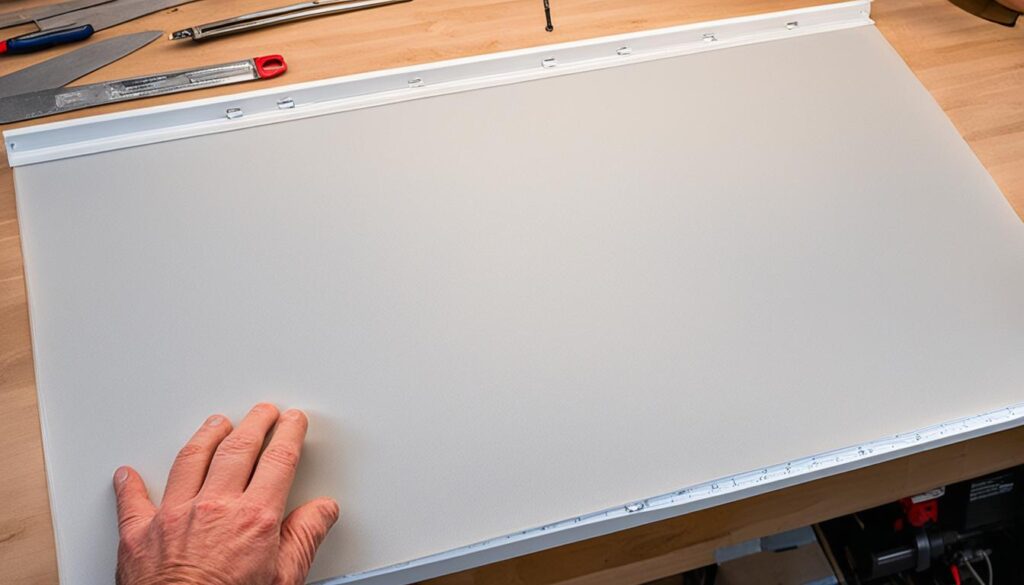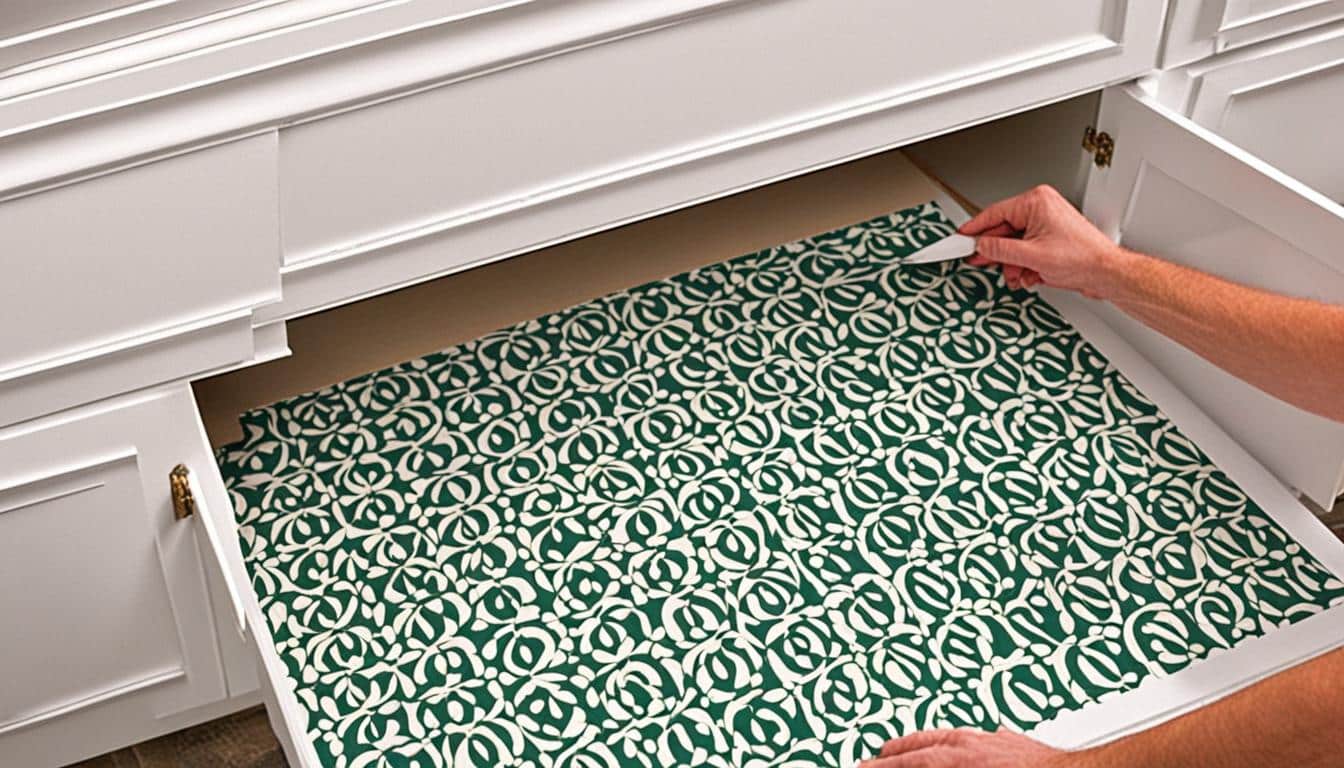Did you know that the underside of your kitchen cabinets can make a significant impact on the overall aesthetics of your kitchen?
If you’ve ever looked down and been bothered by the exposed plywood or unsightly gaps, you’re not alone.
The good news is that there are easy ways to hide cabinet undersides and transform your kitchen into a space that is both functional and visually pleasing.
In this guide, I will provide a step-by-step tutorial on how to cover the underside of your cabinets, allowing you to achieve a polished and seamless look.
We will discuss the best materials to use for this project and explore alternative solutions and creative ideas for finishing the undersides.
Whether you’re a seasoned DIY enthusiast or a beginner looking for a fun and rewarding project, this guide is perfect for you!
So let’s dive in and discover how to transform the underside of your cabinets and take your kitchen to the next level!
Assessing and Preparing the Cabinet Underside
Before diving into the installation process, it’s crucial to assess the current state of your cabinet undersides. Take a close look to identify any inconsistencies in color or any cavities that need to be addressed.
This assessment will help you determine the necessary steps to prepare your cabinet sides for the installation.
Once you have assessed the undersides, the next step is to prepare the cabinet side. To do this, you’ll need to trim the plywood and back by 1/4″ to make room for the skin panel.
This ensures a proper fit and seamless integration of the cover. Taking the time to accurately measure and trim the plywood will provide a clean and polished finish.
Additionally, if there is a cavity underneath the cabinet, it’s important to fill it with bottom spacers. These spacers will help create a uniform surface for the skin panel installation.
By eliminating any gaps or unevenness, you’ll achieve a professional-looking result that maximizes the aesthetic appeal of your cabinet undersides.

Once you have assessed and prepared the cabinet underside, you’ll be ready to move on to the next step: installing the skin panel. This will be covered in the following section.
Installing the Skin Panel
In this section, I will guide you through the process of installing the skin panel to cover the underside of your cabinets.
Now that you have prepared the cabinet side and filled any cavities, it’s time to apply the skin panel and achieve a seamless look.
To begin, carefully align the skin panel with the bottom of the cabinet’s face frame. Make sure it fits snugly and covers the entire undersurface.

Next, use a nail gun or adhesive to secure the skin panel in place. Take your time to ensure it is properly attached, avoiding any gaps or uneven surfaces. This will ensure a professional and finished appearance.
To further enhance the aesthetic appeal and hide any exposed edges, we recommend attaching scribe molding along the bottom of the side skin panel.
Scribe molding will create a clean and polished look, concealing any imperfections and giving your cabinets a refined finish.
Once the skin panel and scribe molding are securely installed, step back and take a moment to admire the impressive transformation.
You’ll be amazed at the difference it makes in enhancing the overall look and feel of your kitchen cabinets.
Alternative Solutions and Ideas
If you’re looking to enhance the look and functionality of your kitchen cabinets, there are various alternative solutions and ideas to cover the underside.
One option is to paint it to match your cabinets, creating a cohesive and polished appearance. This not only adds a pop of color but also helps to camouflage any imperfections and create a seamless look.
Another stylish option is to install light rail molding and a skin panel.
Light rail molding not only adds a decorative touch but also serves as a functional barrier, preventing dust and debris from accumulating on the underside.
The skin panel, on the other hand, provides a sleek and modern finish that elevates the overall aesthetic of your cabinets.
When it comes to creative finishing options for cabinet undersides, the possibilities are endless. Consider using different materials like reclaimed wood or glass panels to add a unique touch to your cabinets.
You can also incorporate design elements such as patterned wallpaper or textured tiles for a truly one-of-a-kind look.
Don’t be afraid to think outside the box and experiment with various finishes and textures to create a statement piece in your kitchen.
FAQs
How Can I Cover The Underside Of My Kitchen Cabinets?
To cover the underside of your kitchen cabinets, you can use a skin panel made of plywood or another suitable material. This panel can be attached to the bottom of the cabinets to create a clean and finished look.
What Are The Best Materials For Covering Cabinet Undersides?
The best materials for covering cabinet undersides include plywood, melamine, or laminate. These materials are durable, easy to clean, and can be customized to match the look of your cabinets.
How Can I Hide Cabinet Undersides In An Easy And Creative Way?
There are several easy and creative ways to hide cabinet undersides. One option is to install light rail molding and a skin panel, which creates a sleek and modern look.
Another option is to paint the undersides to match your cabinets or use unique design elements and materials, such as fabric or decorative trim.
What Do I Need To Do Before Installing The Skin Panel?
Before installing the skin panel, you need to assess the current state of your cabinet undersides. Look for any inconsistencies in color or cavities that need to be filled.
Trim the cabinet side and back by 1/4″ to make room for the skin panel and fill any cavities with bottom spacers to create a uniform surface.
How Do I Install The Skin Panel To Cover The Underside Of My Cabinets?
To install the skin panel, apply it to the prepared cabinet side and make sure it aligns flush with the bottom of the cabinet’s face frame.
For a finished look, you can attach scribe molding to cover any exposed plywood edges. Once everything is properly installed, step back and admire the beautifully finished underside of your kitchen cabinets.

